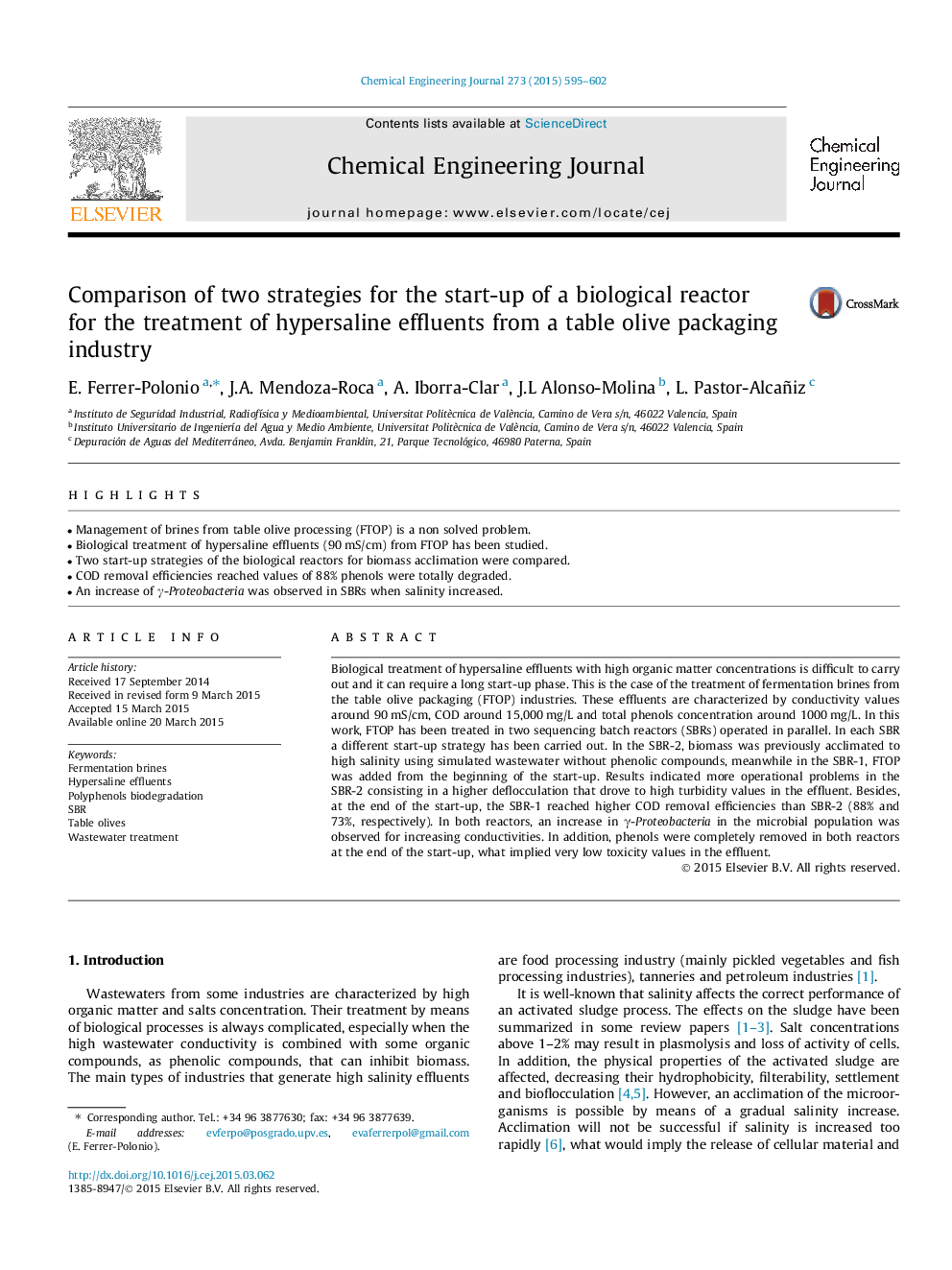| Article ID | Journal | Published Year | Pages | File Type |
|---|---|---|---|---|
| 6584944 | Chemical Engineering Journal | 2015 | 8 Pages |
Abstract
Biological treatment of hypersaline effluents with high organic matter concentrations is difficult to carry out and it can require a long start-up phase. This is the case of the treatment of fermentation brines from the table olive packaging (FTOP) industries. These effluents are characterized by conductivity values around 90 mS/cm, COD around 15,000 mg/L and total phenols concentration around 1000 mg/L. In this work, FTOP has been treated in two sequencing batch reactors (SBRs) operated in parallel. In each SBR a different start-up strategy has been carried out. In the SBR-2, biomass was previously acclimated to high salinity using simulated wastewater without phenolic compounds, meanwhile in the SBR-1, FTOP was added from the beginning of the start-up. Results indicated more operational problems in the SBR-2 consisting in a higher deflocculation that drove to high turbidity values in the effluent. Besides, at the end of the start-up, the SBR-1 reached higher COD removal efficiencies than SBR-2 (88% and 73%, respectively). In both reactors, an increase in γ-Proteobacteria in the microbial population was observed for increasing conductivities. In addition, phenols were completely removed in both reactors at the end of the start-up, what implied very low toxicity values in the effluent.
Keywords
Related Topics
Physical Sciences and Engineering
Chemical Engineering
Chemical Engineering (General)
Authors
E. Ferrer-Polonio, J.A. Mendoza-Roca, A. Iborra-Clar, J.L Alonso-Molina, L. Pastor-Alcañiz,
